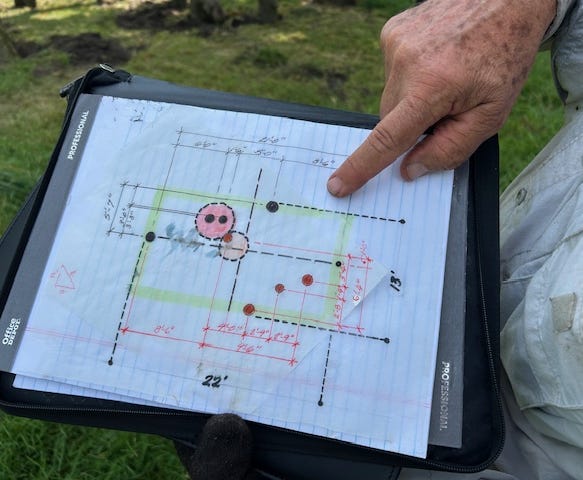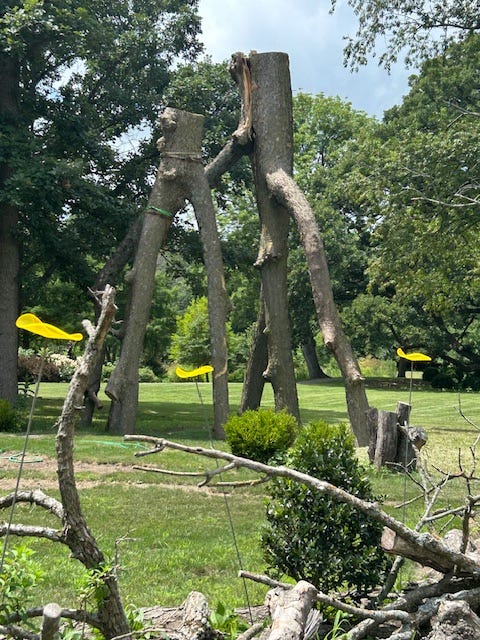Perks and perils
And upside-down trees
The advantages of having a leading architect as your neighbor are clear.
His family home is beautiful, meticulously maintained and noteworthy—an asset that quietly lifts nearby property values. Plus it’s possible to casually score some (free) professional advice about certain matters, like how to choose the right exterior lighting or roofing contractor.
Then, there’s a flip side, certain disadvantages connected to living near a celebrated design master. Your own property inevitably looks at least one shade inferior by comparison.
And sometimes you’re not sure how to react when he decides to, say, plant two large trees upside down.
Have a look.
Meet Russel Francois, a mostly-retired architect in Bloomington, Ill., who quietly harbors the wish that he had spent more of his career on landscape design rather than on the dozens of public and private structures he’s brought to life.
His backyard reveals that latent passion: 10 verdant, idyllic, beautiful acres that, yes, have a creek gurgling through their sun-dappled grounds.
When a windstorm recently toppled a 40-foot hackberry tree, Russel saw more than a loss. He saw opportunity. He removed a second, weakened hackberry (“One tree fell and you murdered the other,” teased his granddaughter) and decided they would become the center for his planned elliptical arbor.
No small feat. Drawings that aligned the two fallen giants with a pair of nearby oak trees had to be prepared.
Ground had to be readied. Heavy equipment brought in. And then the two trees—Russel thinks they’re almost as old as he is—were re-planted upside down.
He thanks Zeke Flynn and Matt Capodice for their muscle, expertise and good humor in tree cutting and earth moving. They seemed to have relished the experience. And his wife, Becky, for her patient support. She shakes her head and smiles, sometimes in that order.
Now the once-felled hackberries stand tall, their bottoms pointing skyward. From some perspectives, the two trees appear as a male and female—nearly touching in silent dialogue.
For others, they seem emblems of fragility and resilience. Or an invitation to view familiar objects in an unfamiliar way, framed like a living sculpture through a garden gate composed of what’s left of smaller Osage trees, artfully intertwined.
Russel is delighted if the place catches you off guard, perhaps brushing against edges of the spiritual.
I asked if the place has a name.
“Nah. That would be too self-important,” he said. “All I did was turn a couple trees upside down.”
Will they grow again? Unlikely. Yet they already have a second life as art.








Thanks for sharing this story! And thanks to Russell for making fallen nature into art for the neighborhood to enjoy.
As an enthusiastic gardener, I really liked this article. I've seen tree roots repurposed as fairy gardens, but never a tree turned upside down! Congrats to your neighbor.